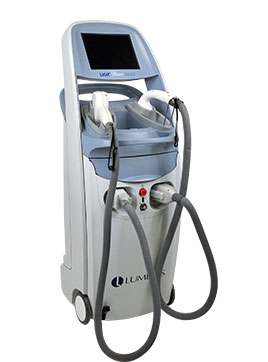
LightSheer laser is the advanced diode system used for permanent hair removal. It is produced by the Israeli Lumenis company and remains the best-known device for laser epilation. It has the safety certificate and the FDA quality certificate as well as it is ISO 9001 certified.
There are several different LightSheer models present on the market. Each of them uses the method of selective photohermolysis. The handpieces emit laser light with the wavelength of 805nm or 1060nm that is absorbed by hair follicle containing melanin and causes its permanent destruction. As a result, hair do not grow back and the their 80%-90% reduction is already possible after three correctly done treatments.
Depending on the model the LightSheer laser can be equipped with one, two or even three handpieces.
The ET handpiece with the 9 x 9 mm spot size was the first launched one. It is mainly used to treat small areas that require maximum precision (bikini, moustache).
The XC handpiece with the 12 x 12 mm spot size is the optimum solution for both small and large treatment areas. It appeared on the market as the successor of the smaller ET handpiece.
The HS handpiece with the 22 x 35 mm spot size is designed in a different way being the biggest one working with LightSheer lasers. It is dedicated for treating larger body areas, e.g. back, legs. Its parameters enable the quickest and most comfortable treatment.
The LightSheer Lasers equipped with ET and XC handpieces use the patented ChillTip Integrated Contact Cooling Technology. The sapphire contact window keeps constantly the temperature trading in the range between 2 and 5 ⁰C. In that way the patient’s skin is protected from being burnt as well as treatment comfort is significantly improved.
The biggest HS handpiece uses the High-Speed Integrated Technology. Thanks to special pressure, the vacuum draws skin into handpiece which makes the distance between laser diodes and hair follicle smaller causing reduction in both blood flow and density of melanocytes in the skin. As a result, less energy is absorbed by the epidermis and more by the hair melanin. After the laser light emission is ended, the hair follicle gets destroyed and skin finally recovers its primary shape.
The LightSheer laser models differ due to several aspects. They can be equipped with different number of handpieces, have different size and weight, the wavelength used (805nm or 1060nm) as well as frequency and available maximum energy fluence. Taking the above parameters into consideration, not always the newest laser model is the best choice for each user.
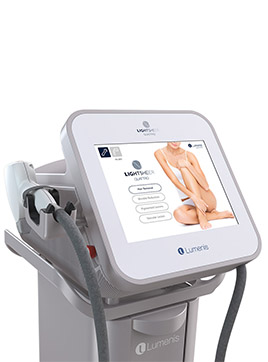 LightSheer Quattro
LightSheer Quattro
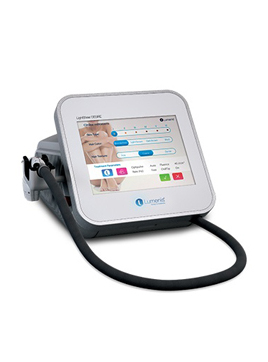 LightSheer Desire
LightSheer Desire
 LightSheer Duet
LightSheer Duet
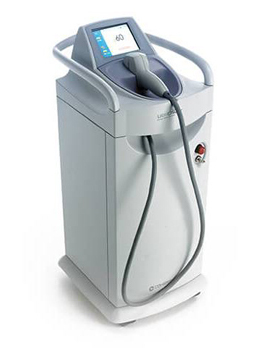 LightSheer XC
LightSheer XC
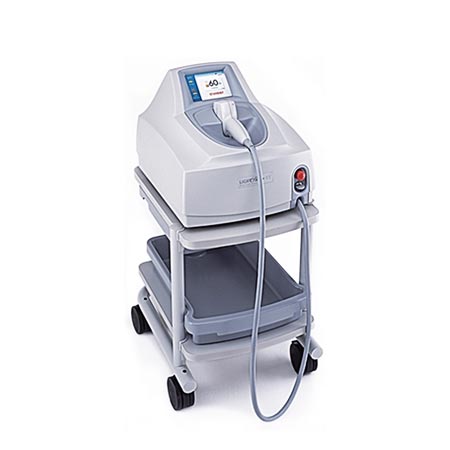 LightSheer ET
LightSheer ET
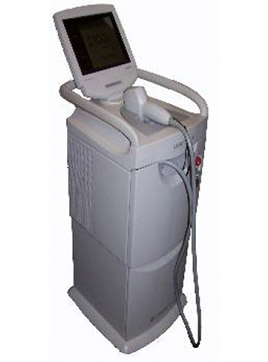 Other LightSheer versions: ST, EC, SC, EP
Other LightSheer versions: ST, EC, SC, EP
It may be generated in case of cooling system or ChillTip issue. Its occurrence usually disables the normal laser treatment due to required breaks in device operation necessary for the system to reach temperature level that has been set.
Usually results from needed cleaning of device interior in order to get rid of accumulated dust. Such impurities should not be belittled as in extreme cases long-term negligence may lead to laser overheating and serious power supply damage. Laser working loudly may also be caused by fans (bearings) that have been already used up or insufficient cooling system.
Lack of OptiPulse mode means that the shortest impulse time (Auto) is not available.
In such case it should be checked if the laser has been calibrated correctly and if the energy level emitted by handpiece is right. To perform such validation, the external laser power meter should be used. If the measurements confirm the right laser performance, handpiece should be exchanged due to power loss driven by wear and tear of laser diodes.
Serious, but very rarely appearing issue that is usually driven by breakdown of cooling system pump. The cooling liquid leak can additionally lead to significant damages such as pouring of the power supply (LightSheer XC) or compressor (LightSheer DUET). It is recommended to exchange the pump as soon as possible and perform laser inspection.
It appears quite rarely and refers only to the older LightSheer lasers. The E3 error means the breakdown of laser controller board and disables its further usage. The laser repair consists in controller board exchange and repeated comprehensive calibration of device.
 Free telephone consultation
Free telephone consultation
 Individual approach to each client
Individual approach to each client  Fast and friendly service
Fast and friendly service  Short lead times of services
Short lead times of services  Competitive prices
Competitive prices  +48 507 327 662
+48 507 327 662
 +48 22 126 24 76
+48 22 126 24 76